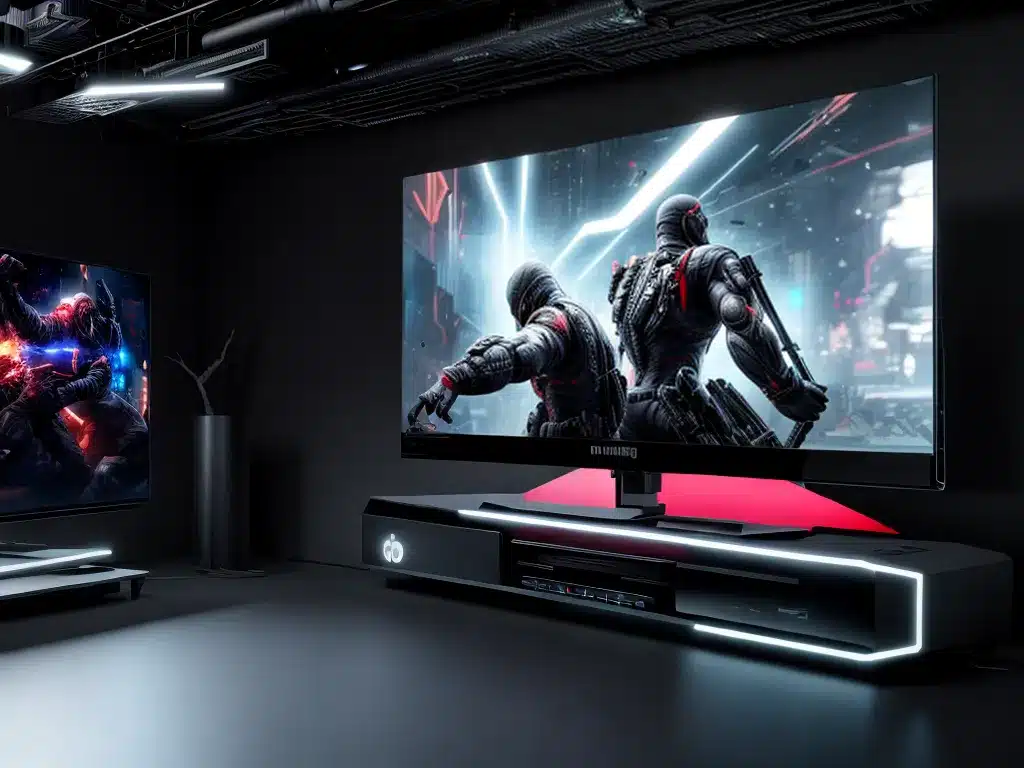
8K Gaming: Can Todays GPUs Handle Ultra HD Gaming?
Introduction
With the rise of 8K displays and TVs, there is increasing interest in 8K gaming. However, 8K requires 4 times the resolution of 4K gaming, putting significant demand on modern GPUs. In this article, I explore whether today’s graphics cards can deliver a quality 8K gaming experience.
The Demands of 8K Gaming
8K resolution has a massive 7680 x 4320 pixels, compared to 3840 x 2160 for 4K. This means 8K has over 33 million pixels to render, versus under 8 million for 4K. To maintain the same frame rate at 8K, the GPU has 4 times more pixels to process. This requires substantially more graphics processing power.
Additionally, 8K textures and assets will demand more VRAM. Current GPUs often have 8-12GB of VRAM which is sufficient for 4K. But early 8K gaming tests show that 12GB frames quickly fill up at 8K. Therefore, upcoming GPUs will need higher VRAM to accommodate 8K.
Performance of Current GPUs
Modern GPUs like Nvidia’s RTX 3080 or AMD’s RX 6800 XT can run many games at 4K 60fps. But these cards struggle with the demands of 8K.
In benchmarks, the RTX 3080 achieves around 24fps in demanding games like Red Dead Redemption 2 at 8K max settings. While the RX 6800 XT sees 18fps in the same benchmark. These frame rates are far from a smooth 60fps target for high-quality 8K gaming.
Reducing settings improves performance, but with very limited image quality. The latest GPUs cannot deliver both high fidelity graphics and high frame rates at 8K.
Requirements for Quality 8K Gaming
To achieve 60fps at max settings for modern AAA games at 8K, benchmarks estimate GPUs need 2-4x the performance of today’s models. This likely requires:
-
Faster memory – GDDR6X and HBM2 memory offers more bandwidth needed for 8K textures.
-
Higher core counts – More graphics cores will be necessary to process 8K rendering and effects in real-time.
-
More VRAM – At least 16GB or more VRAM will be needed to store 8K assets.
-
New architectural optimizations – Improving efficiency of memory, caching, parallelism and new rendering techniques can further boost 8K performance.
The Future of 8K Gaming
8K gaming with max fidelity and high frame rates demands a large generational leap over today’s GPUs. Realistically we may need to wait for at least the next generation of cards using process shrinks, new memory technologies, and architectural improvements.
Nvidia’s rumored RTX 4080 could offer the necessary performance uplift. But it may be a couple years before 8K 60fps is achievable affordably for most gamers. However, tomorrow’s GPUs paired with upcoming 8K gaming monitors and TVs will bring incredibly immersive experiences.
Conclusion
While modern GPUs can technically output an 8K signal, they cannot maintain high framerates in graphically intensive games. Their raw processing power and memory bandwidth is insufficient for the demands of 8K rendering. Realistically we will need at least the next generation of GPUs before 8K 60fps gaming is viable. But future hardware will unlock incredibly detailed 8K worlds.












